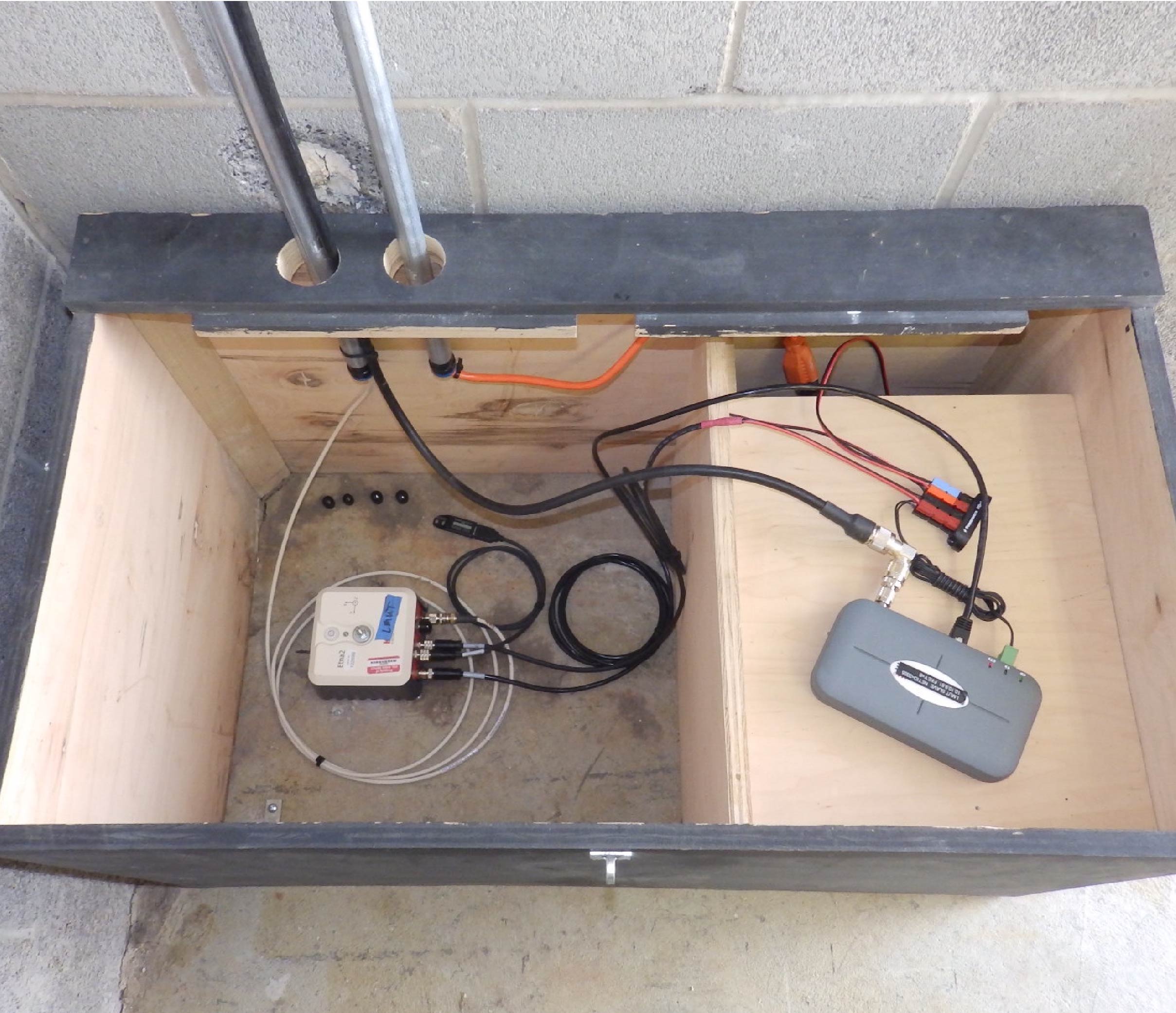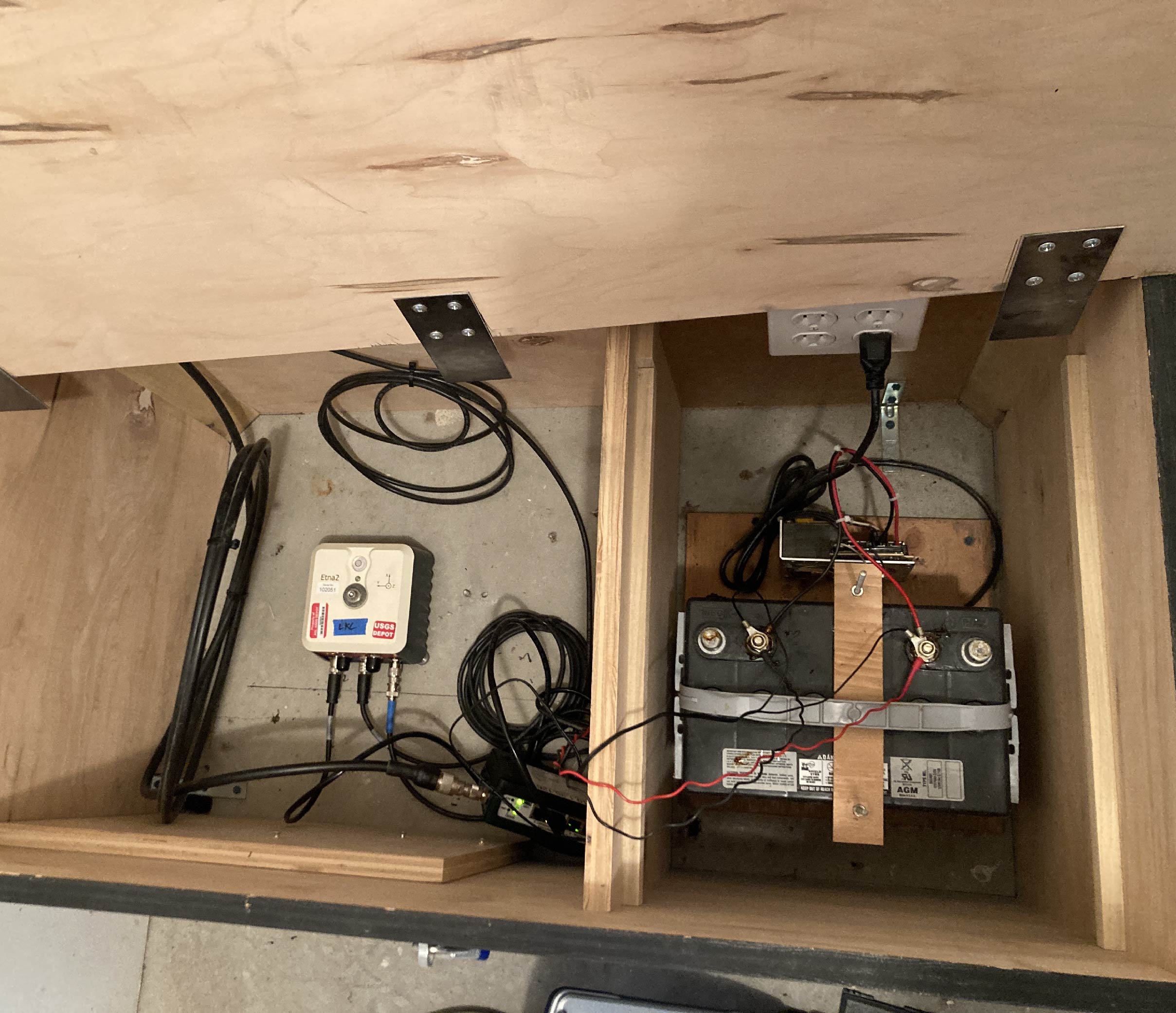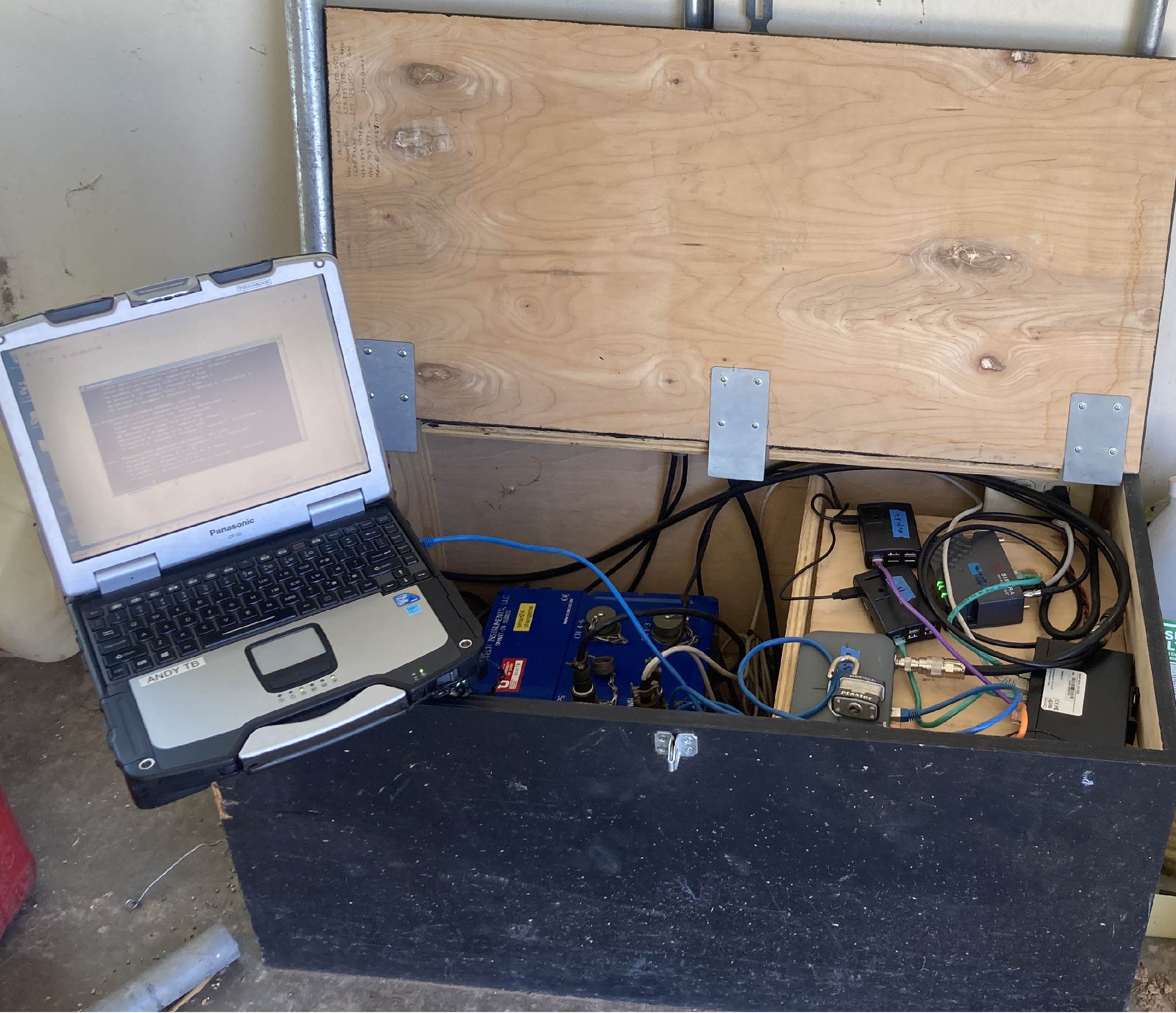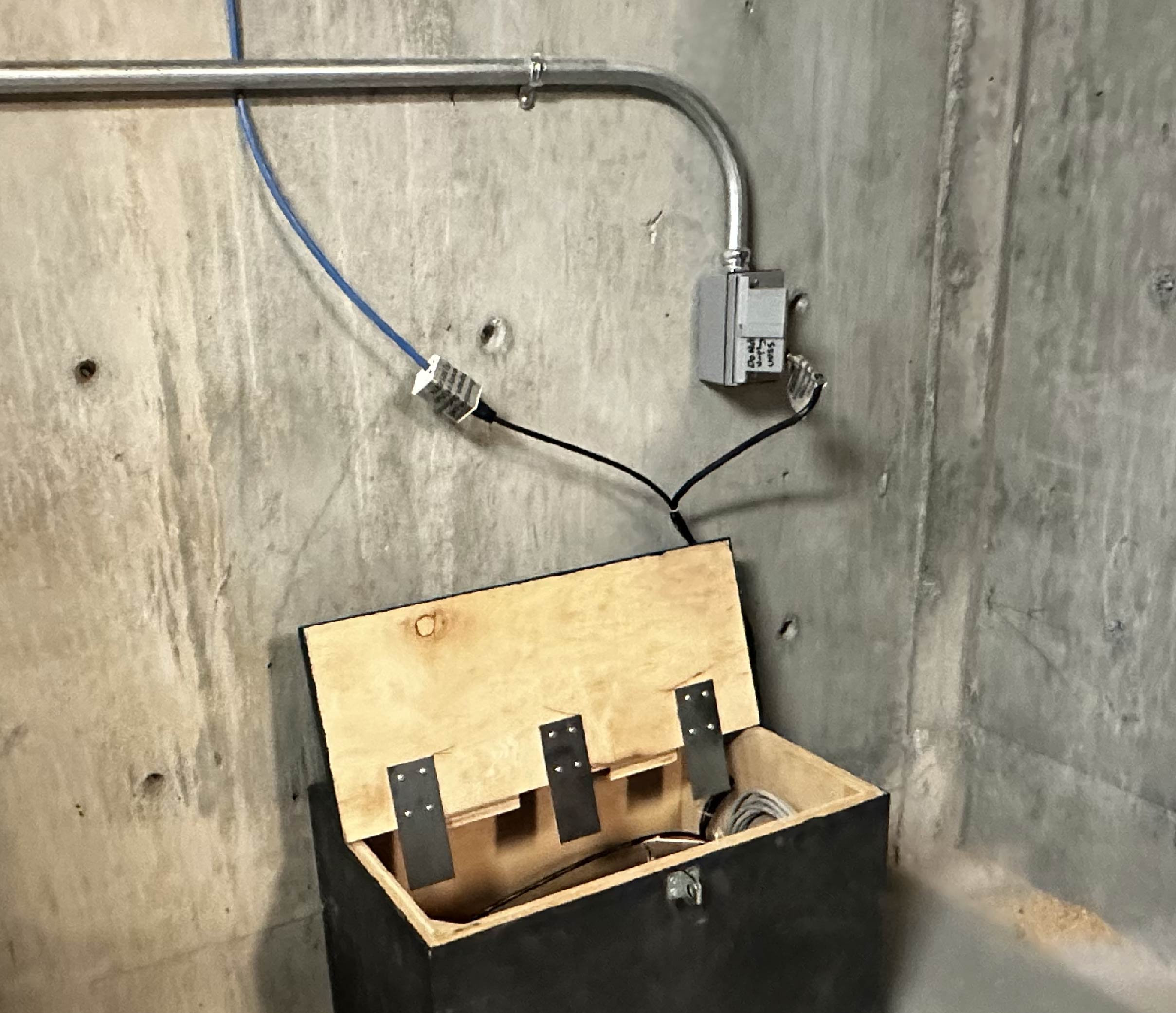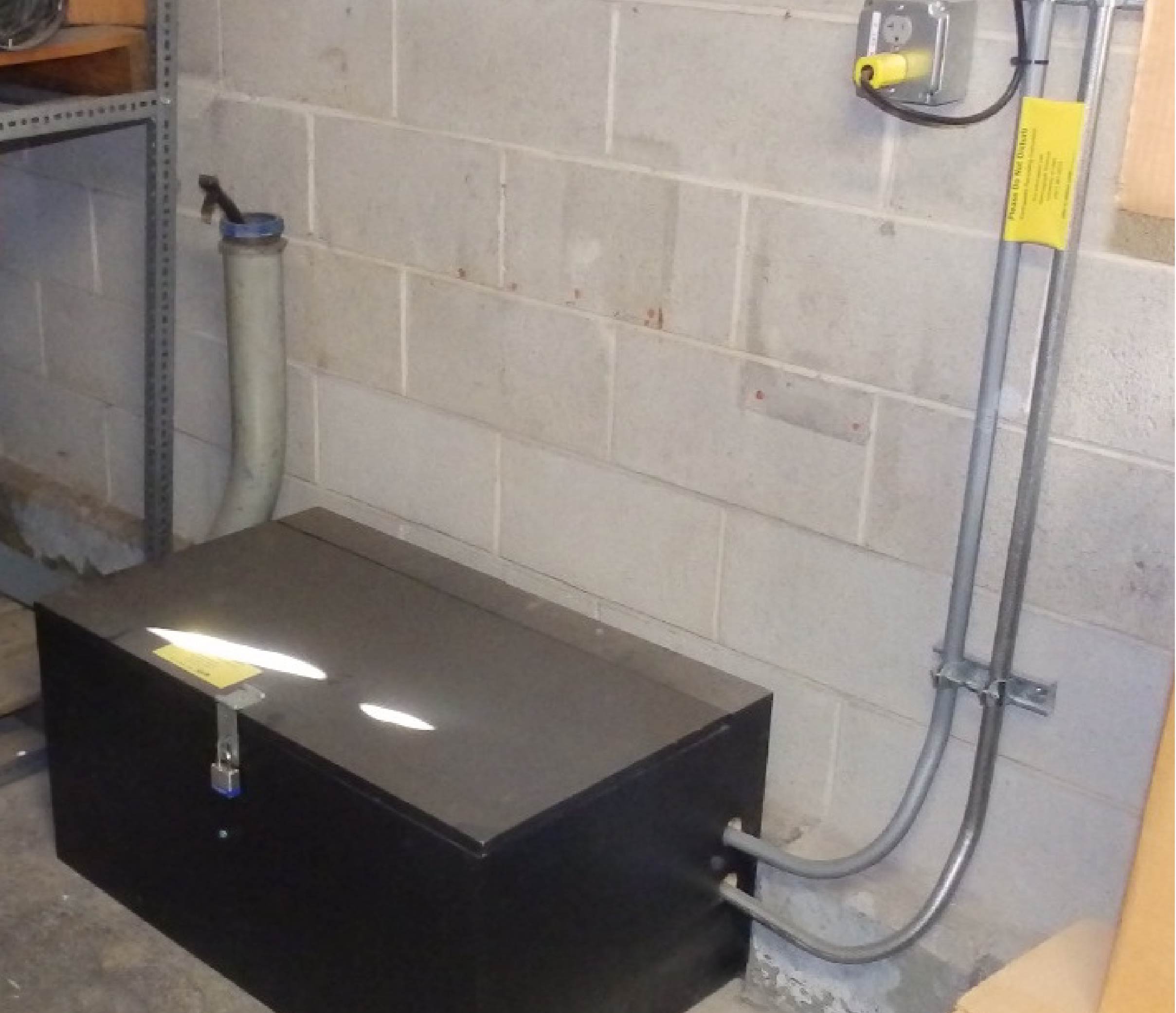Station Siting Criteria
When selecting sites to install strong-motion stations, we considered the following:
- Population centers–most instruments are located in major population centers where people, buildings, and infrastructure are concentrated.
- Active fault locations.
- Geologic site conditions–to sample soil types (based on geology and Vs30 classifications) and other site conditions important to ground motions.
- Locations relative to other strong-motion stations in operation.
- Site where Vs30 measurements are available.
- Critical facilities–it is useful to have instruments near important government, industrial, and transportation facilities.
- National guidelines recommending that sites be in 1-2 story buildings less than 4000 sq. ft. in plan or in a “free-field” location away from large structures.
- Telemetry constraints–current telemetry options are an Internet connection, digital subscriber line, cell phone, or spread-spectrum digital radio.
- Protection from vandalism.
Our siting plans were reviewed by several local engineers, the USGS Ground-Motion Team, and the Utah Advisory Committee for Urban Strong-Motion Monitoring.
Technical Installation Details
The strong-motion network has sensors (called accelerometers) capable of recording strong ground motions on scales up to 2 g or 4 g depending on the instrument. Other sensors in the UUSS seismograph network are designed to record weak ground motions and will not remain on-scale during even a moderate-sized earthquake. Data from the strong-motion sensors are continuously telemetered to the University of Utah campus via an existing Internet connection, with a digital subscriber line, a cell phone, or a spread-spectrum radio network. The telephone/radio connections are operated entirely at UUSS expense. Stations are installed within existing small buildings (typically a one-story reinforced structure less than 4000 square feet in area) or in fabricated small enclosures if the unit is installed away from existing structures. Regardless of the type of installation, all construction and installation work is coordinated with someone designated by the property owner. The complete installation is at no expense to the property owner.
Building Installations
If installed in an existing building, the sensor and associated electronics require an area on a concrete floor of about 3 feet by 3 feet and a vertical space above the instruments of about 3 feet. The sensor is bolted to the concrete floor with a single bolt. The installation should be in an area of the building where the occupants are not routinely working and where items on nearby shelves will not topple onto our equipment.
The unit requires AC power (110/115VAC) and should be installed in a location with access to a dedicated outlet within about 10 feet. If an AC outlet is not available in the immediate vicinity of the instrumentation, we will contract with a licensed electrician to install a more convenient outlet. A backup battery provides emergency power in case of electrical failure. The equipment draws a negligible amount of current (less than one amp). There is no fire hazard from this equipment.
Precise timing is provided to the instrument by a GPS clock. The GPS clock obtains a signal from orbiting satellites and therefore a small antenna must be located on the roof of the building or otherwise external to the building. The GPS antenna is connected to the sensor via either existing conduit or via conduit we install. Additional electronics connects the sensor to the telemetry system.
In some cases, we install a radio transmitter and antenna on the roof next to the GPS antenna. The radio antenna is generally yagi-style, approximately 2 feet long. A cable from the antenna connects to the sensor along the same conduit as the GPS cable. Other options for data transmission include a cell phone or a digital subscriber line (installed at our expense). Where possible, we connect to the Internet for continuous data transmission back to our central recording system. If an Internet connection is used, we work with on-site IT personnel to ensure that the equipment poses no security risks to the property owner.
Free-Standing Installations
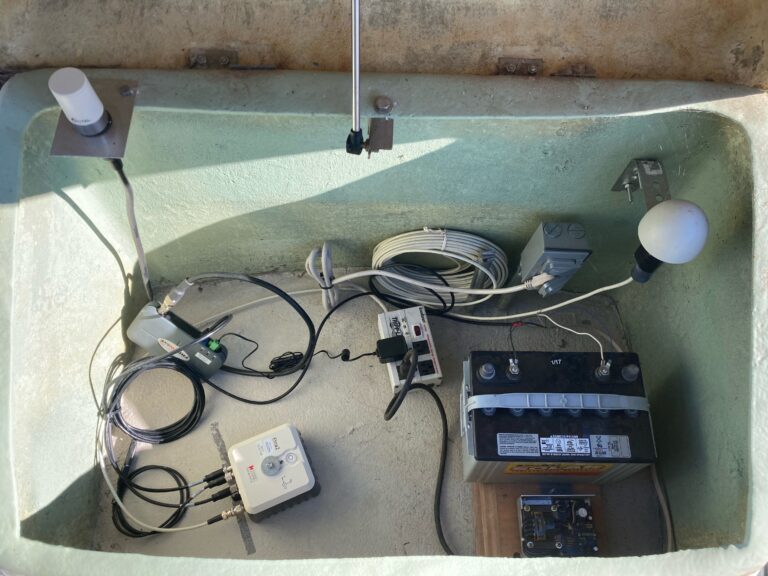
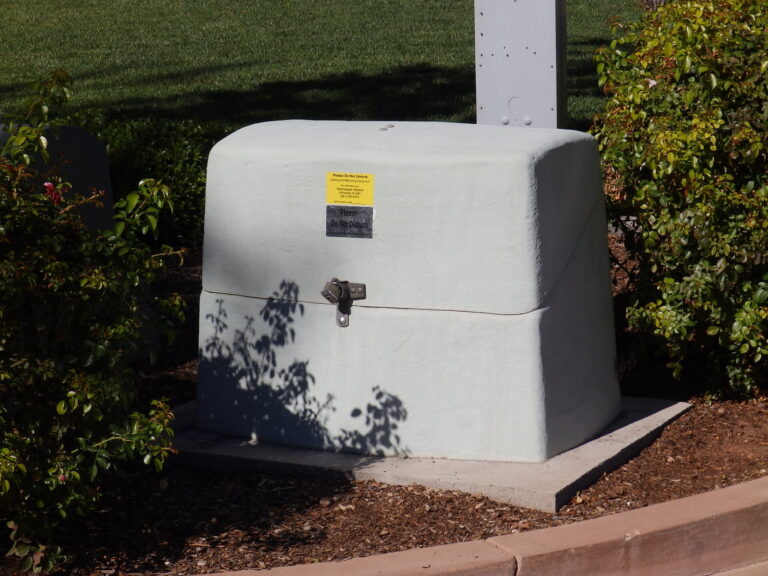
In situations where a suitable building is not available, we fabricate housing for the sensor and its electronics. The installation consists of a small (3 feet x 3 feet) concrete pad (installed using hand tools) with a locked fiberglass weatherproof hut installed over the instrumentation and secured to the concrete pad. It may be necessary to dig a small trench in which we place conduit containing cables connecting the sensor to a nearby power, telephone, or Internet connection. In such cases, the trench is dug using hand tools, completely buried with minimal impact to the environment.
Some of these installations may be solar powered, in which case we install a small radio tower (8 to 10 feet high, possibly as high as 20 feet, with a 12-inch triangular base in a concrete footing). We mount the solar panels (approximately 3 feet x 3 feet), a radio-transmit antenna, and GPS antenna on the tower. A 3-foot diameter x 2-foot deep barrel containing 12-volt batteries is buried in the ground adjacent to the tower.
Information for Property Owners and Stakeholders: site permit (pdf)
NetQuakes Instruments: USGS strong-motion instrument for installation in private homes

